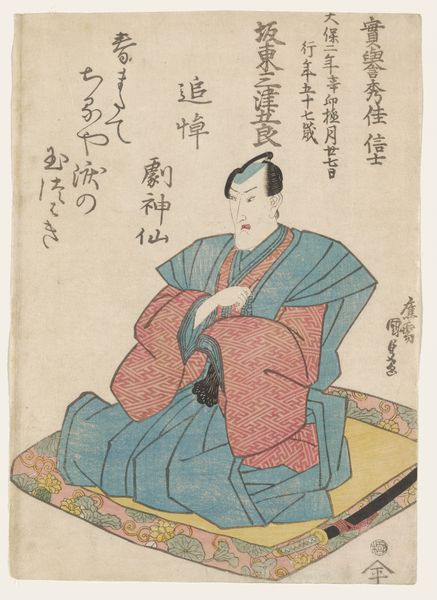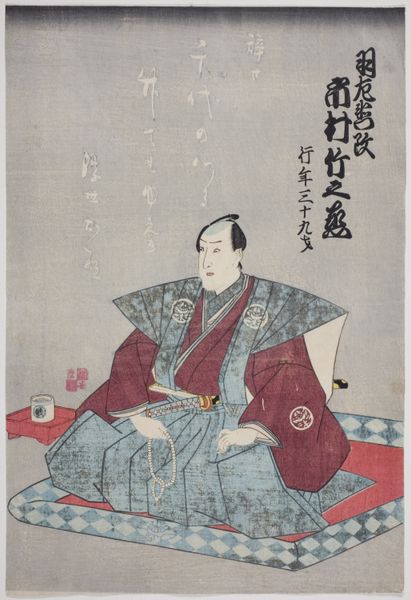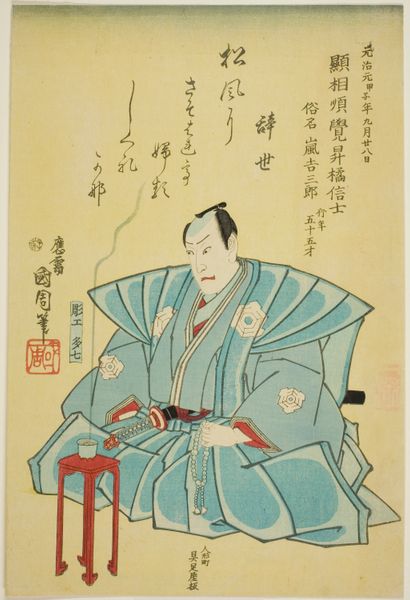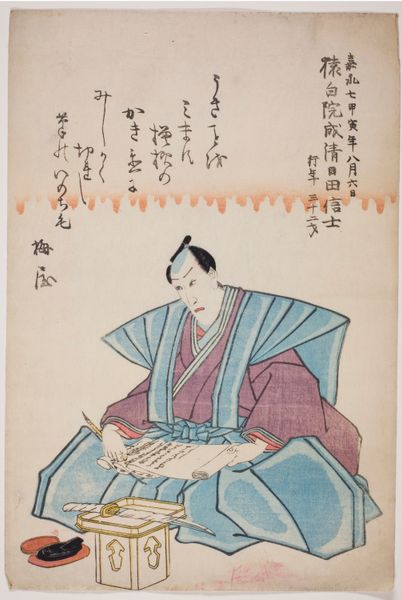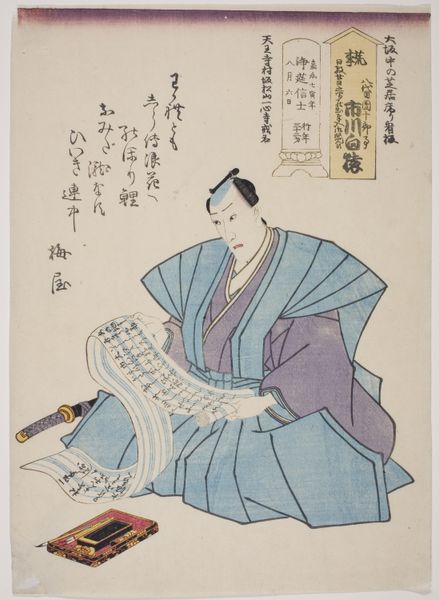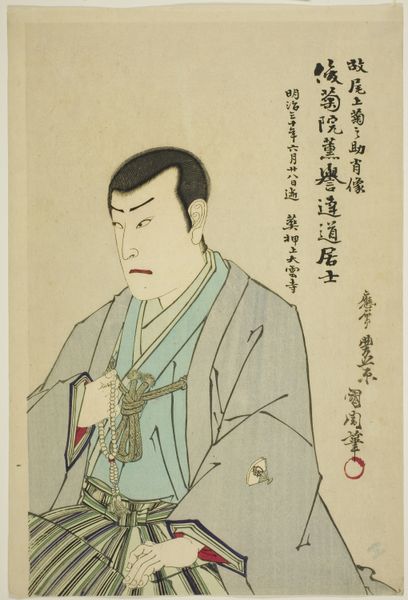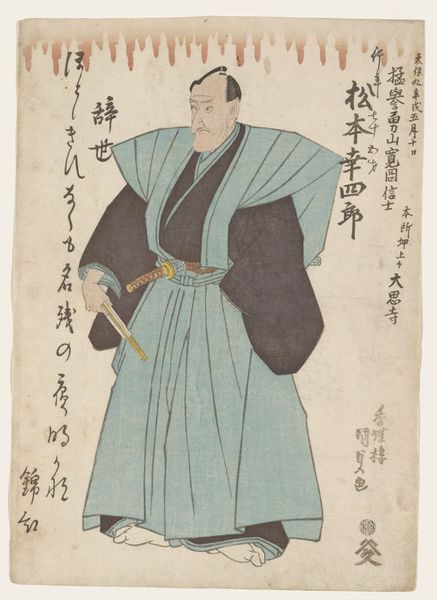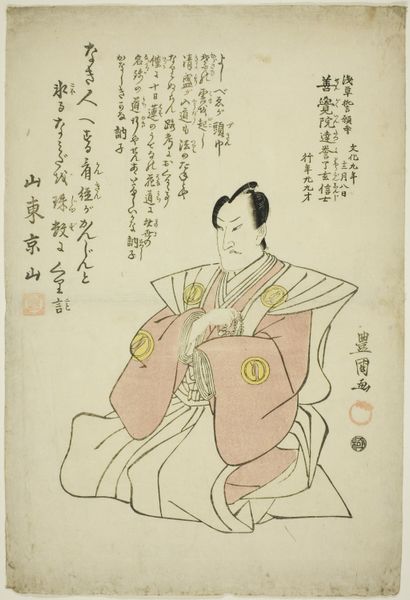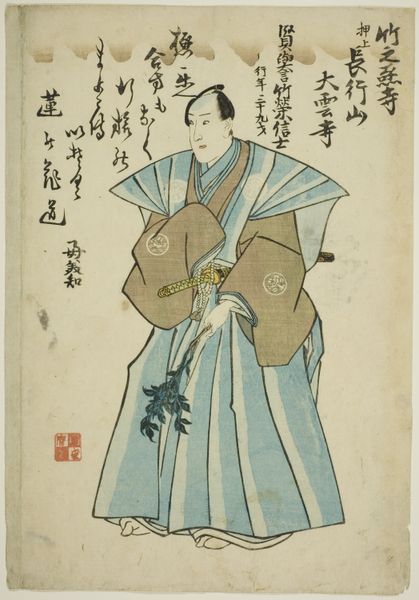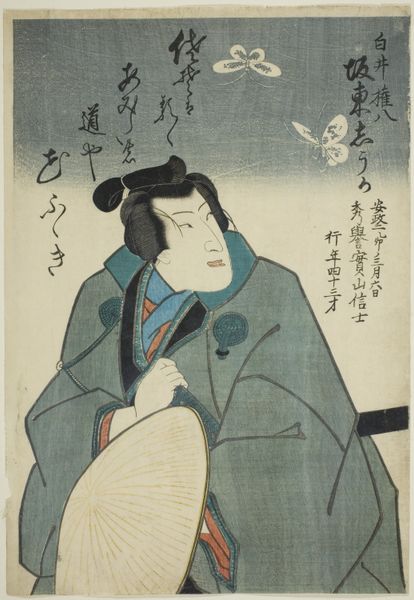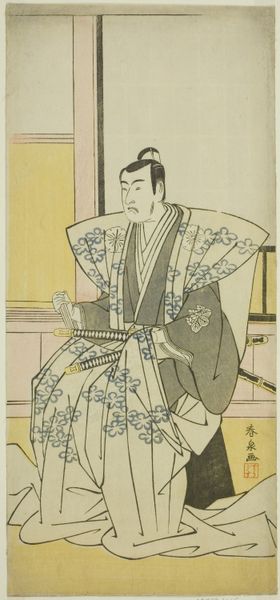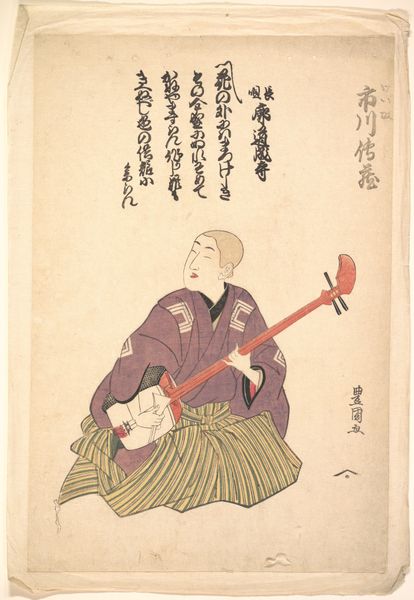
print, woodblock-print
#
portrait
# print
#
asian-art
#
ukiyo-e
#
woodblock-print
Copyright: Public Domain
Editor: Here we have "Memorial Portrait of the Actor Nakamura Utaemon IV," a woodblock print by Suiho Henjin, dating back to 1852. I'm struck by the somewhat subdued, melancholic atmosphere. What stands out to you in this piece? Curator: Immediately, I'm drawn to the materiality. Consider the woodblock printing process itself. Each line, each color plane, required skilled labor. The layering of inks, the specific types of wood used for the blocks – these details were consciously chosen to convey meaning. Look closely, and you begin to imagine the artisan's hand at work. Editor: That’s interesting; I hadn't thought about the labor involved. So, you see beyond just the image itself? Curator: Absolutely. The choice of Ukiyo-e style isn't arbitrary. These prints were often mass-produced and widely consumed. Memorial prints like this served a dual purpose: honoring the deceased actor, of course, but also participating in the wider system of celebrity culture and artistic consumption of the Edo period. The print functioned as a commodity, its value intertwined with both artistic skill and popular appeal. Do you see this at play? Editor: I can see that. It makes me think about celebrity culture today. We create images, we share and sell. What is this process called, again? Curator: Ukiyo-e refers to pictures of the floating world. It often portrayed the entertainment quarters, showcasing celebrities from that era like Kabuki actors. The process in question involves transferring designs onto wood, meticulously carving away non-image areas. The raised surfaces are then inked, and paper pressed against the block captures the image. Think of the many impressions made. Now, think of distribution. Where does this connect? Editor: So, from the start this portrait of Nakamura was made to circulate, to be used up... like a product of sorts. It makes you rethink the very act of mourning, almost like another consumer trend. Curator: Precisely! The material reality shapes our understanding of even the most seemingly personal emotions. Looking at it, one understands this duality of human interest with material realities. Editor: I see that! Thanks so much for pointing that out; I feel like I understand the print better now. Curator: Likewise! Understanding the work enriches our appreciation, deepening engagement for all!
Comments
No comments
Be the first to comment and join the conversation on the ultimate creative platform.
